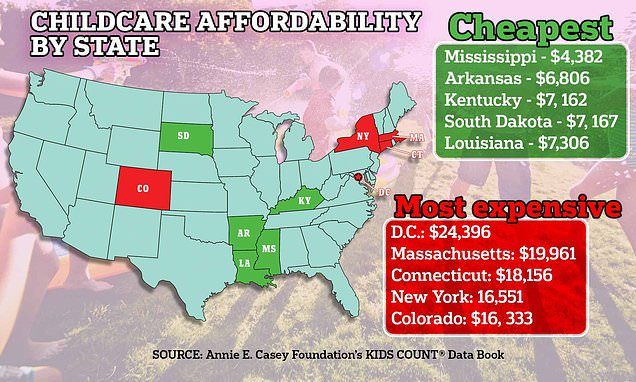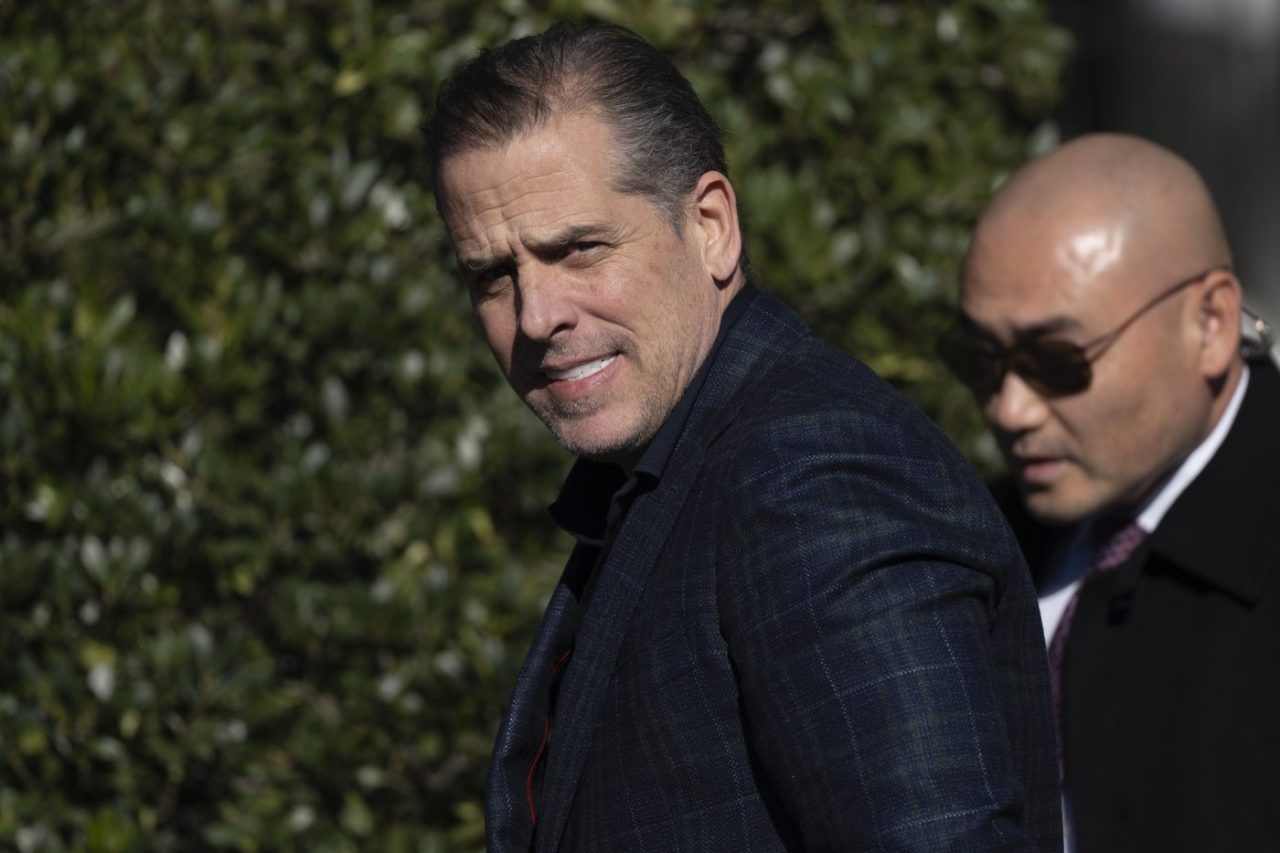Childcare costs have soared by 220% in three decades, figures show
Parents are in an effective geographical 'lottery' with childcare costs varying by $20,000 a year between states
Families now face paying $10,600 a year for one child, a new report shows
Childcare costs have shot up by 220 percent in three decades forcing many parents out of the workforce, a landmark new report shows.
Families now pay $10,600 a year for just one child - or one-tenth of a couple's average income, according to data compiled by the educational charity the Annie E. Casey Foundation.
The Kids Count Data Book also found parents were facing an effective lottery on childcare costs which vary by as much as $20,000 a year between states.
In the most expensive example, households in D.C. dish out an average of $24,396 for their child to attend a center-based care facility for toddlers. This amounts to 73 percent of a median single mother's income in the state - or 11 percent of a married couple's earnings.
By comparison, the cost of such facilities in Mississippi are just $4,382 on average - or 5 percent of a married couple's income. It was the cheapest example researchers found.
Childcare costs have shot up by 220 percent in three decades, a landmark new report reveals. The data shows the cost of a center-based facility for one child per year
After D.C., Massachusetts, Connecticut, New York and Colorado were the next four most expensive states for childcare.
Families in these states all pay over $16,000 a year on average for their child to attend a center facility.
Meanwhile, residents in Arkansas, Kentucky, South Dakota and Louisiana benefitted from the cheapest costs - all below $8,000 a year.
The report also found that childcare costs had increased by 220 percent since 1990 - far outstripping the general rate of inflation.
This is in part due to more parents working - pushing up demand - and the fact centers themselves are underfunded and under-resourced. Childcare businesses survive on margins typically less than 1 percent, the report noted.
Another major concern is the impact spiraling childcare costs has on parents' careers, the research added.
Some 13 percent of children aged up to five years old were from families who said they faced work challenges due to child care struggles.
More than half of working parents with infants or toddlers reported either being late to work or having to leave early at least once in the previous three months.
And some 23 percent had at some point been fired for it, said the report, citing figures from the National Survey or Children's Health.
Parents in North Carolina, Arkansas and Vermont are most likely to give up or change work, with 16 percent of families in these states claiming they had to make 'job changes' to accommodate their childcare struggles.
In all, 10 percent of white children had seen their parents quit, change or turn down work.
But this figure rose to 17 percent for black children and 16 percent for Latinos.
Childcare difficulties disproportionately affect women who are often forced to give up work once they have children.
This trend was exacerbated by the pandemic when schools shut and parents were forced to home-educate their kids while managing their own careers.
A study by Pew Research found that 29.1 percent of mothers were not in the US labor force in September 2020 - compared to just 7.8 percent of dads.
Some 13 percent of kids aged between birth and five years old were from families who said they faced work challenges due to child care struggles
Last year it was revealed the cost of raising a child had ballooned to $292, 017 - hooked on figures from the Department of Agriculture
The scale of the crisis is so concerning that President Joe Biden signed an executive order in April looking to expand childcare accessibility and lower costs.
At the time, Biden said: 'No one should have to choose between caring for the parents who raised him, the children who depend on them, and the paycheck they rely on.'
But the directives fell short of his original $276 billion subsidized childcare plan. The scheme formed part of his Build Back Better domestic agenda that stalled in Congress during Biden's first two years in office.
The Annie E. Casey report notes that one estimate shows shortcomings in childcare system was costing the U.S economy $122 billion a year through lost earnings, productivity and tax revenue.
It reads: 'In the near term, we lose what parents who can't work would be contributing to the economy.
'In the long-term, research indicates children with access to quality care at the earliest ages are more successful in school, giving them a boost in the journey towards employment.'
Hilary Bowles, left, has also attracted a cult following for documenting her lifestyle as a 'DINK'
The foundation is calling on federal, state and local governments to invest more money in childcare.
The study also looked at the overall well-being of children in each state, with New Hampshire coming out best.
By comparison, children in New Mexico were found to have the worst well-being.
However, children in Massachusetts were said to have the best educational well-being, while again New Mexico came out worst in this category.
Massachusetts also came out with the best health ratings among its children while those in Mississippi fared worst on this front.
The figures come after couples boasted on TikTok about the benefits of a 'DINK' lifestyle - meaning 'dual income, no kids.'
The term 'DINK' dates back to 1987 and was first coined by the Los Angeles Times when researchers noted that stalling incomes were deterring would-be parents from starting families.
But it has been gone viral again on social media amidst high inflation and rising childcare costs. The term ''#DINK' now has 205 million views on TikTok.
Last year, the financial management site Mint Intuit found that the cost of raising a child to the age of 17 had ballooned to $292,017 - hooked on figures from the Department of Agriculture.
Source: Daily Mail


